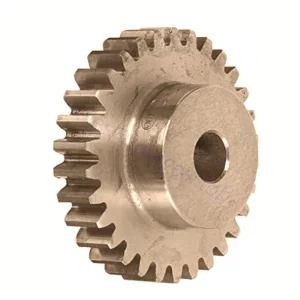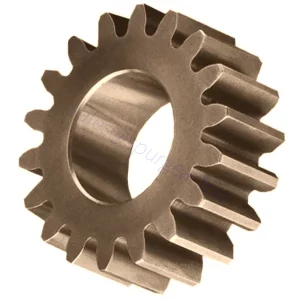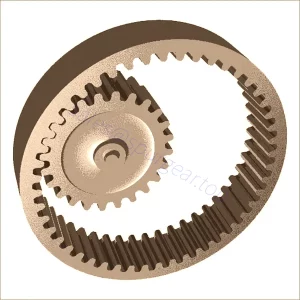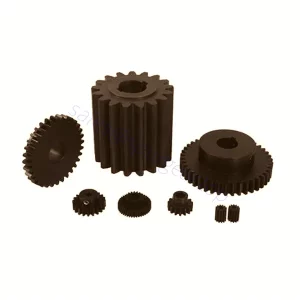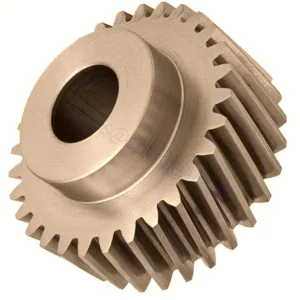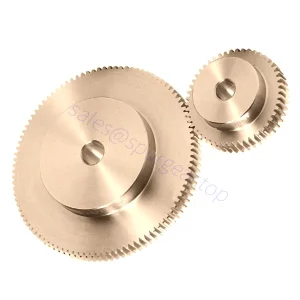SSJ Group – leading manufacturers
Spur Gear
Spur gears are one of the most popular types of precision cylindrical gears. These gears feature a simple design of straight, parallel teeth positioned around the circumference of a cylinder body with a central bore that fits over a shaft. In many variants, the gear is machined with a hub which thickens the gear body around the bore without changing the gear face. The central bore can also be broached as to allow the spur gear to fit onto a spline or keyed shaft.


What Is a Spur Gear?
Spur gears are used in mechanical applications to increase or decrease the speed of a device or multiply torque by transmitting motion and power from one shaft to another through a series of mated gears.

Spur Gear
Spur Gears Applications
Spur gears are used to transfer motion and power from one shaft to another in a mechanical setup. This transference can alter machinery’s operating speed, multiply torque, and allow for the fine-tuned control of positioning systems. Their design makes them suitable for lower speed operations or operational environments with a higher noise tolerance.Typical industrial applications include Transmission, Conveyor systems, Speed reducers, Engines, mechanical transportation systems,Gear pumps and motors, and Machining tools.
spur gear
Some commonly used spur gear terms include:
Pitch Circle
The circle derived from a number of teeth and a specified diametral pitch. The circle in which tooth spacing or profiles are established from which tooth proportions are constructed.
Outside Diameter
The diameter of the addendum circle, or the circle along the outermost points of a spur gear’s teeth. This measurement is the largest diameter spur gears have.
Pitch Diameter
Is the diameter of the pitch circle. This is where a spur gears angular velocity is measured. This is also a critical component for determining center distances between mating spur gears.
Center Distance
The distance between two gears, measured from the center shaft of one gear to the center shaft of the mating gear.
Dedendum
The depth of a tooth space below the pitch circle. Generally greater than the addendum of the mating gear to provide clearance.
Module
The ratio of the reference diameter of the gear divided by the number of teeth. Module is the metric equivalent to diametral pitch.
enjoy video
Spur Gear Video
SSJ Group
Types of Spur Gear

External Spur Gear

SSJ Group
Some FAQ
What Materials Are Spur Gears Made Of ?
What Is The Main Difference Between Spur Gear And Helical Gear ?
In spur gear, the teeth are parallel to the axis of the gear. In helical gear, teeth are inclined at an angle (called helix angle) with the gear axis. Spur gear imposes only radial load on bearings. Helical gear imposes radial load and axial thrust load on bearings.
Can A Spur Gear Mesh With A Worm Gear ?
How Are Spur Gears Made ?
benefits of spur gears

Spur Gear
Products Center
Gallery
Spur Gear Gallery






